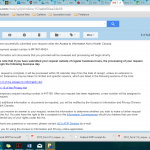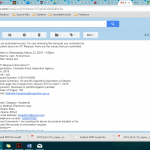Data obtained from the 2015 British Columbia Ministry of Transportation and Infrastructure briefing notes point to financial losses as the primary reason the provincial government changed the Discovery Coast ferry service.
This ferry service is the primary transportation link to the coastal region of the province and the Great Bear Rain Forest, one of the most bio-diverse regions and an area that sees tourists from all over the world.
But Petrus Rykes, president of the West Chilcotin Tourism Association, claims the numbers the ministry used as justification for their decision are “complete bogus.”
In briefing notes obtained from the Freedom of Information Act, the Ministry refers to a loss of $7 million from 2012/2013 as a primary reason for changing the ferry service.
Rykes, though, says that $7 million is inaccurately represented.
In a 2014 report, the West Chilcotin Tourism Association accused the government of “misleading the public by providing inaccurate financial information about the operation of Route 40.”
According to Rykes, the $7 million includes the refurbishing cost of a previously operational ferry- the Queen of Chilliwack – which was only used on Route 40 (the Discovery Route) for 13 weeks out of the year. It was used on other routes the remainder of the year.
“They are stacking the figures to make it look like (the route) had lost that much,” said Rykes.
Rykes said the government used $15 million of taxpayers money to fix up the Chilliwack, even though they had intended to sell the vessel all along.
They fixed it up and then sold it to Fiji for one million dollars without telling anyone, he said.
Rykes added it is important to note Route 40 is actually two different routes, which the government fails to distinguish in their numbers: the larger vessel which operates from Port Hardy to Bella Coola, and the smaller vessel that docks at the smaller, native villages further inland.
He said the government cut the route making 75 per cent of the profits – the primary route from Port Hardy to Bella Coola – and kept the smaller route that incurred the majority of the losses. The reason, he said, was by keeping the route that “went to the native villages, that was the only way (the government) could keep getting their subsidies.”
But the tourism area and ferry services only see one per cent of the subsidies, according to Rykes. Instead, he said, the money is going to subsidize bureaucrats who have houses on the island.
“A logical business would get rid of the money losing parts,” said Rykes. “But they did totally the opposite. And they tried to bamboozle the public on this.”
A BC Discovery Route ferry service is still operational (which now replaces the Queen of Chiliwack) but it requires the tourists to switch ferries to the Nimpkish – a 16- car ferry that many say is not up to tourism standards.
For Pat Corbett, chair of the Cariboo Chilcotin Tourism Association, the Nimpkish is not an adequate solution.
“This is an open vessel,” he said, “so while you are sitting on the ferry the water floods right over your vehicle.”
“You are sitting on that flipping thing for nine hours. It’s scary if you are in rough seas.”
BC Ferries has plans to launch a new passenger-vehicle vessel for the 2019 season.
FOR JIM:
Access to Information Request information:
1) Municipal Request: (this is a screen shot from the mail sent to my home in Edmonton- I had not yet paid the fees)

(The above link is a document cloud of my Edmonton request.)
2) Provincial Requests: I have included a document cloud of my provincial request form I filed.
3) Federal Request: Because I filed to the Health department, I was able to file my federal request online, so I have no copy of a filled out request form. I have included a receipt indicating I did file and (unfortunately) pay for this request.
This is what I said in my request (not exactly word-for-word since I can’t remember ): I am looking for data, correspondence, emails and complaints relating to chiropractic negligence. I do not need names, I do need all instances of complaints filed and complaints received and processed. As this is in the public interest, I ask that all fees be waved.

4) Previously filed request:
(I have included a screen shot of the email confirmation.)






